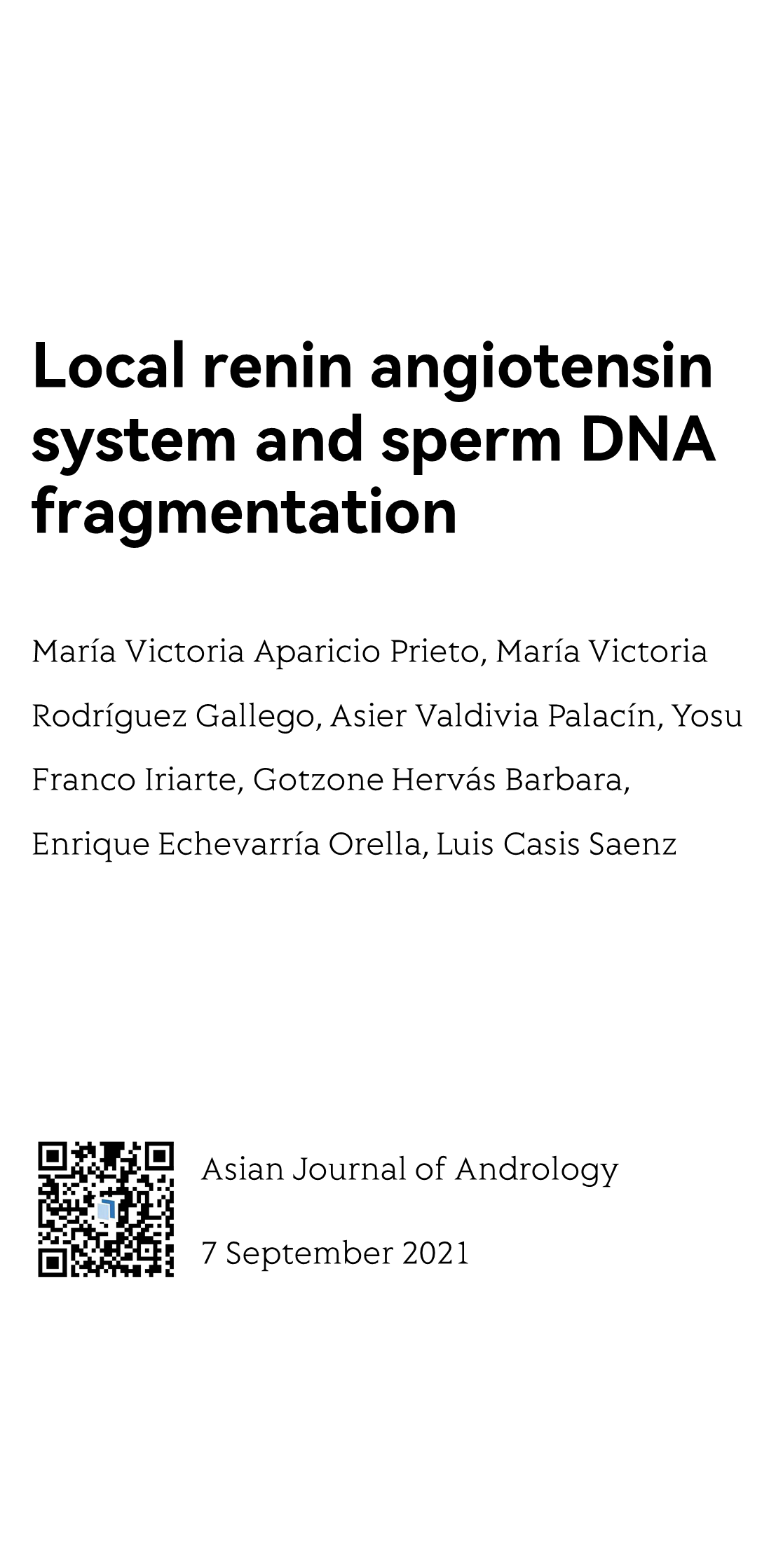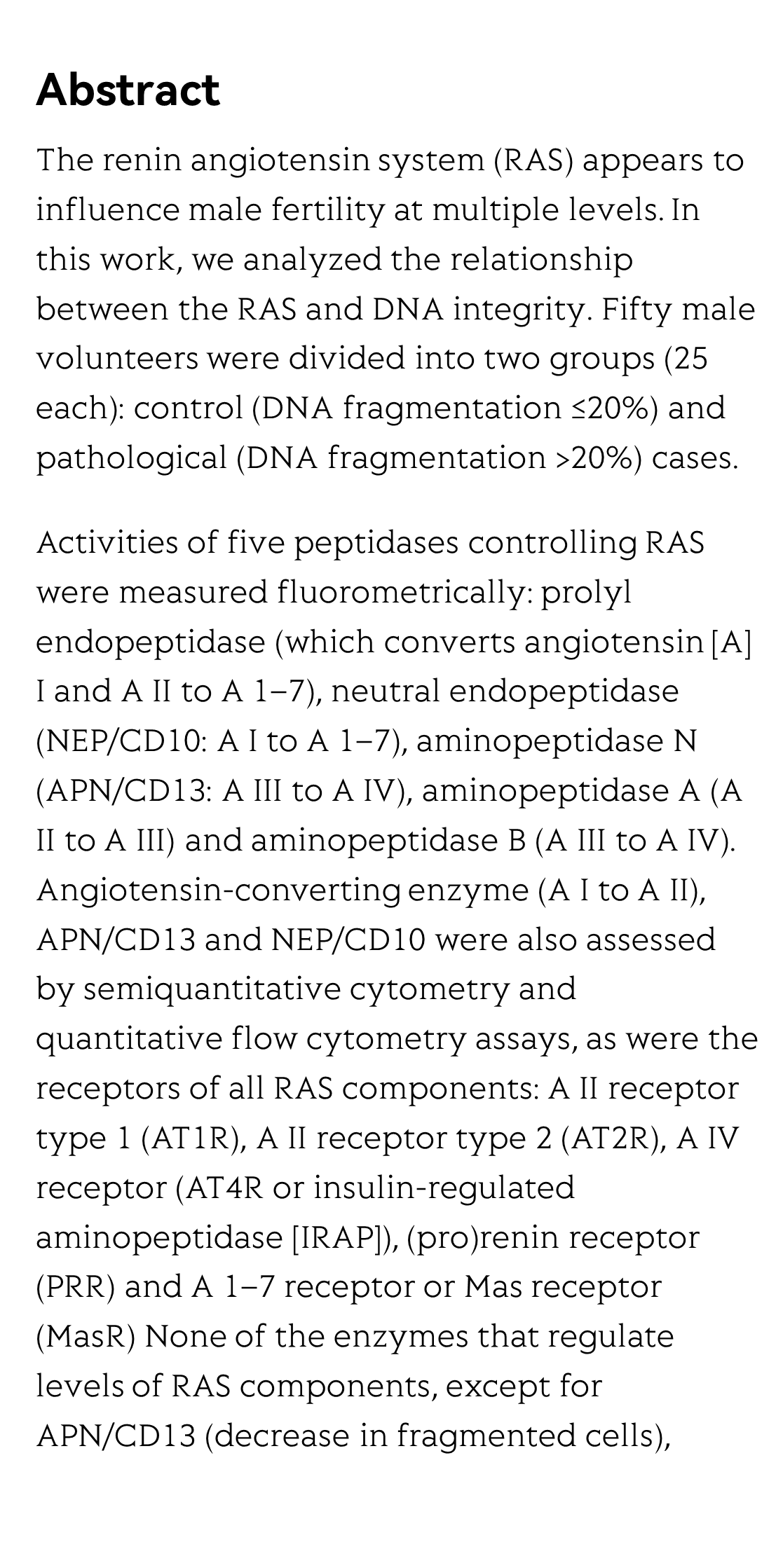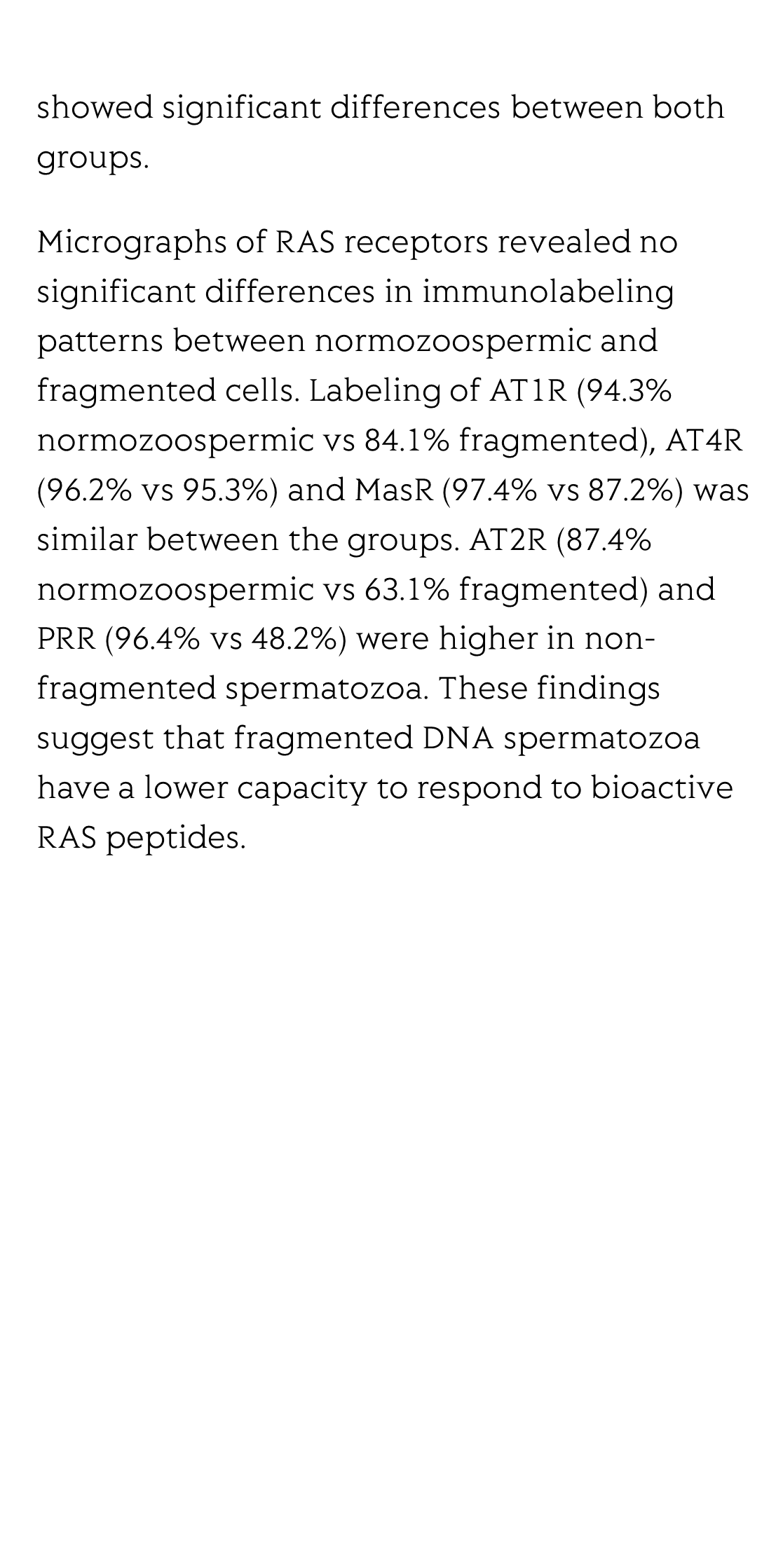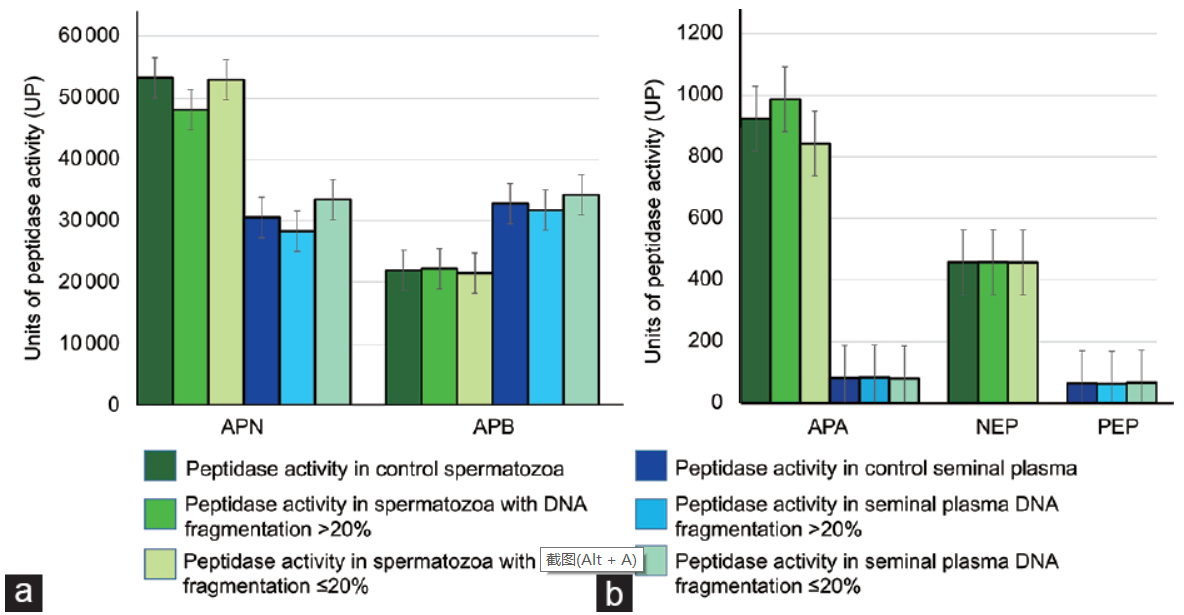(Peer-Reviewed) Local renin angiotensin system and sperm DNA fragmentation
María Victoria Aparicio Prieto ¹, María Victoria Rodríguez Gallego ², Asier Valdivia Palacín ³, Yosu Franco Iriarte ⁴, Gotzone Hervás Barbara ³, Enrique Echevarría Orella ³, Luis Casis Saenz ³
¹ Human Reproduction Unit, Cruces University Hospital, Barakaldo 48903, Spain
² Human Reproduction Unit, San Pedro Hospital, Logroño 26006, Spain
³ Department of Physiology, Faculty of Medicine and Nursing, University of the Basque Country (UPV/EHU), Leioa 48940, Spain
⁴ Human Reproduction Unit, Ruber International Hospital, Madrid 28034, Spain
Asian Journal of Andrology, 2021-09-07
Abstract
The renin angiotensin system (RAS) appears to influence male fertility at multiple levels. In this work, we analyzed the relationship between the RAS and DNA integrity. Fifty male volunteers were divided into two groups (25 each): control (DNA fragmentation ≤20%) and pathological (DNA fragmentation >20%) cases.
Activities of five peptidases controlling RAS were measured fluorometrically: prolyl endopeptidase (which converts angiotensin [A] I and A II to A 1–7), neutral endopeptidase (NEP/CD10: A I to A 1–7), aminopeptidase N (APN/CD13: A III to A IV), aminopeptidase A (A II to A III) and aminopeptidase B (A III to A IV). Angiotensin-converting enzyme (A I to A II), APN/CD13 and NEP/CD10 were also assessed by semiquantitative cytometry and quantitative flow cytometry assays, as were the receptors of all RAS components: A II receptor type 1 (AT1R), A II receptor type 2 (AT2R), A IV receptor (AT4R or insulin-regulated aminopeptidase [IRAP]), (pro)renin receptor (PRR) and A 1–7 receptor or Mas receptor (MasR) None of the enzymes that regulate levels of RAS components, except for APN/CD13 (decrease in fragmented cells), showed significant differences between both groups.
Micrographs of RAS receptors revealed no significant differences in immunolabeling patterns between normozoospermic and fragmented cells. Labeling of AT1R (94.3% normozoospermic vs 84.1% fragmented), AT4R (96.2% vs 95.3%) and MasR (97.4% vs 87.2%) was similar between the groups. AT2R (87.4% normozoospermic vs 63.1% fragmented) and PRR (96.4% vs 48.2%) were higher in non-fragmented spermatozoa. These findings suggest that fragmented DNA spermatozoa have a lower capacity to respond to bioactive RAS peptides.
Flicker minimization in power-saving displays enabled by measurement of difference in flexoelectric coefficients and displacement-current in positive dielectric anisotropy liquid crystals
Junho Jung, HaYoung Jung, GyuRi Choi, HanByeol Park, Sun-Mi Park, Ki-Sun Kwon, Heui-Seok Jin, Dong-Jin Lee, Hoon Jeong, JeongKi Park, Byeong Koo Kim, Seung Hee Lee, MinSu Kim
Opto-Electronic Advances
2025-09-25
Dual-frequency angular-multiplexed fringe projection profilometry with deep learning: breaking hardware limits for ultra-high-speed 3D imaging
Wenwu Chen, Yifan Liu, Shijie Feng, Wei Yin, Jiaming Qian, Yixuan Li, Hang Zhang, Maciej Trusiak, Malgorzata Kujawinska, Qian Chen, Chao Zuo
Opto-Electronic Advances
2025-09-25







